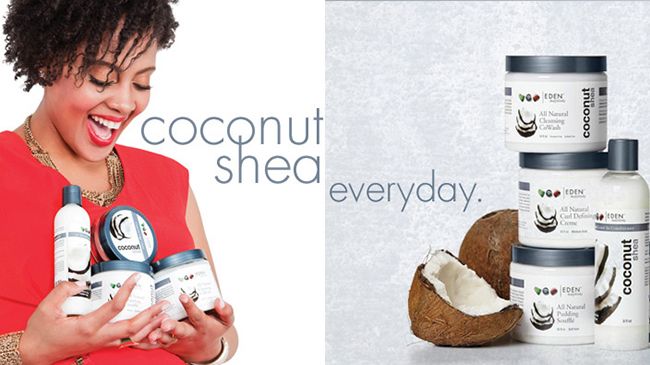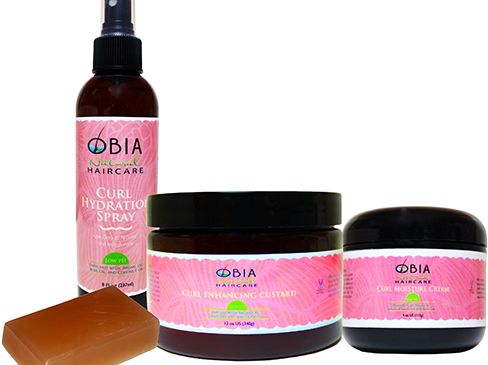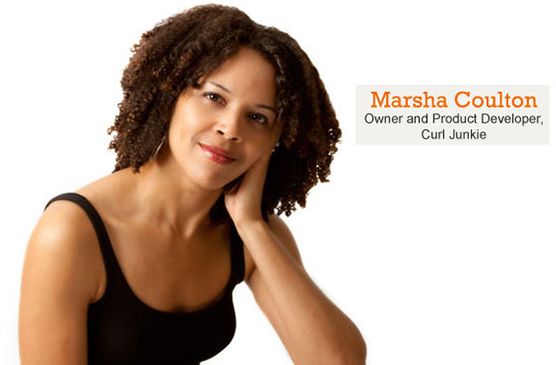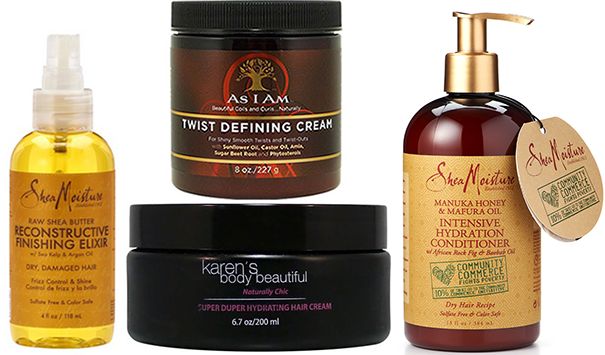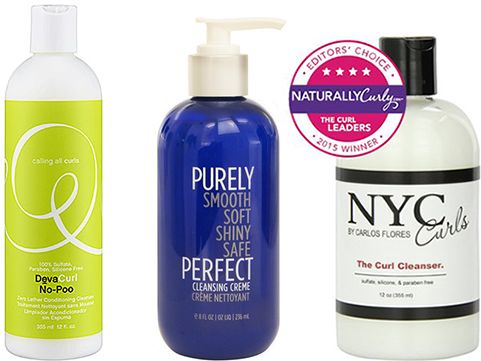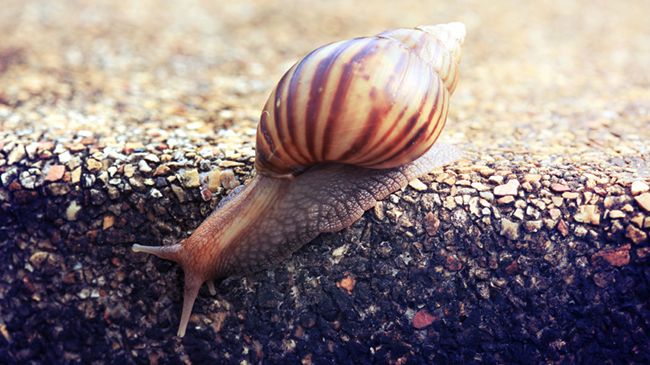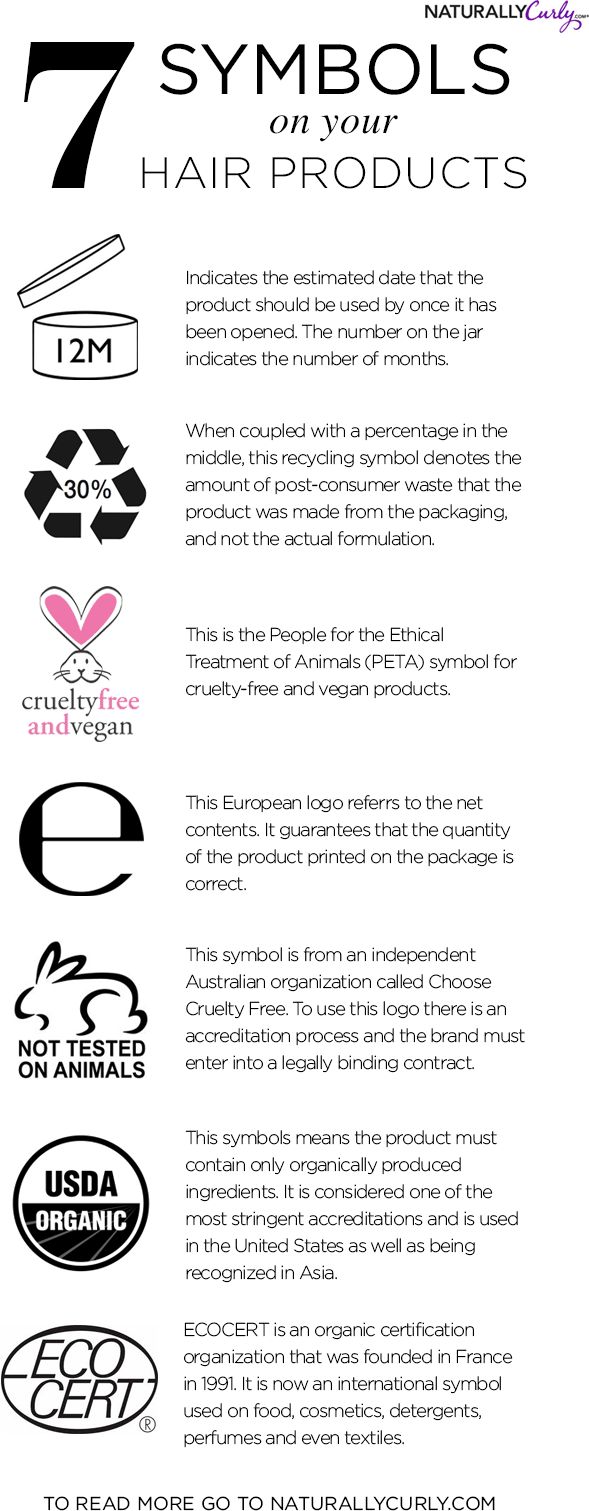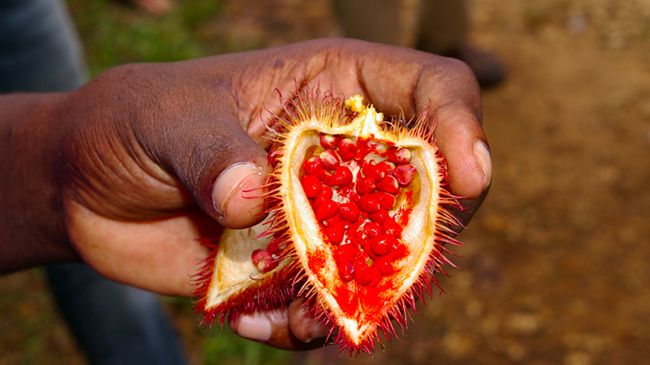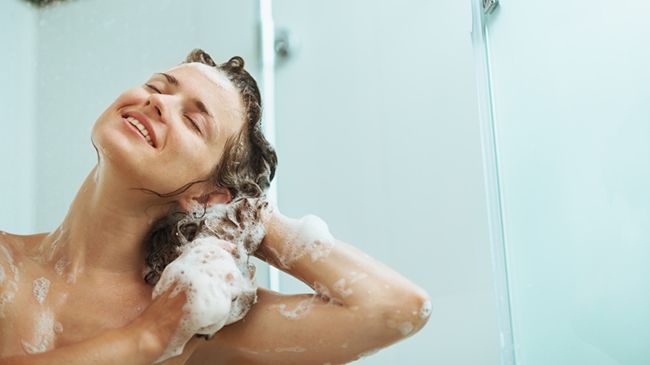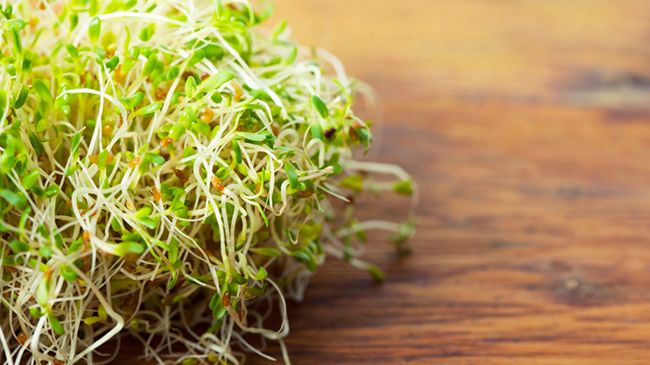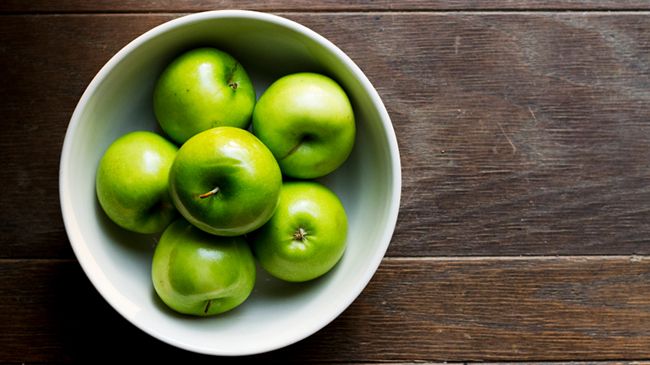Search Results: Sabrina Perkins

Bergamot oranges (Citrus bergamia”> can be traced back to Southeast Asia and it is widely cultivated in the southern region of Italy. Bergamot oil is an essential oil that comes from the Bergamot orange, which is part of the citrus family that includes oranges, lemons, limes, grapefruits, tangerines, and pomelos. They are delicious, refreshing, and are considered an all-star food because they contain flavonoids. Many flavonoids are shown to have antioxidant activity, free-radical scavenging capacity, coronary heart disease prevention, and anticancer activity, according to PubMed. Bergamot oil is a complex mixture of more than 300 compounds and the most prevalent compounds are linalyl acetate (30% to 60%”> and linalool (11% to 22%”>, which are high in anti-inflammatory activity.
There are several other positive attributes of this sweet smelling oil like being an antiseptic, disinfectant, and antispasmodic. It has a powerful aroma, which makes it a popular component in numerous perfumes. Like many other oils, it is primarily derived from cold pressing instead of steam distillation. Earl Grey tea would only be black tea if it weren’t for the irreplaceable bergamot essential oil. It blends well with other citrus oils and pairs well with black pepper, chamomile, clary sage, cypress, frankincense, jasmine, nutmeg, rosemary, sandalwood, and ylang-ylang.
Bergamot benefits for hair
Because of its high activity of inflammatory compounds, this oil is perfect for treating dandruff and any inflammations on the scalp while also protecting the skin and hair from infections if used regularly. The vitamin C found in all citrus fruits is known to be one of the most effective for strengthening, stimulating hair growth, and creating luster and softness. Bergamot oil will also protect your scalp against fungal infections with its disinfectant properties.
How to use Bergamot essential oil on your hair
- Apply a few drops to your shampoo to help with your hair’s pH balance
- Apply to wet hair to add shine and luster
- Add a few drops to your heat protectant to get frizz-free straight hair
- Mix a few drops with a castor and coconut oil mix for a scalp massaging hair tonic
Precautions
WebMD says you should avoid sun exposure after applying bergamot oil to skin or hair until it completely absorbs, as it contains active ingredients that may cause skin problems like blisters, scabs, pigment spots, rashes, and cancerous changes. Consider blending this essential oil with a carrier oil when treating psoriasis and fungal infections.
Do you use bergamot oil?
Many of us know how the staples in the natural hair world like SheaMoisture and Carol’s Daughter got their start but what about others that have kept maintained quality products and committed to their consumers? We love our curls, coils, and waves and they do too, so sit back and learn how these wonderful women manifested their dreams and gave us stellar products to keep our tresses gorgeous!

Eden BodyWorks
Mission: EDEN BodyWorks provides natural products that integrate wellness and beauty inspired by nature to restore and maintain the hair and body’s original design.
Founder Jasmine Lawrence was frustrated at the tender age of 11 when her hair was damaged and breaking badly from a bad relaxer experience. Her hair began to fall out, which was an embarrassing and traumatic experience for the pre-teen. From there she vowed to never use chemicals again on her hair and she began researching for creations she could make for her hair because she could not find products without harsh chemicals. At the age of 13 she became CEO and founder of hair care brand EDEN BodyWorks.
That was almost 11 years ago and EDEN BodyWorks is flourishing with the same founding principles of using natural ingredients that have been used from the start. The products are formulated without petroleum oil, mineral oil, and sodium sulfates. The focus of EDEN BodyWorks is to “strengthen and repair all hair textures – whether relaxed, natural or somewhere in between.”
Jessicurl
Mission: To help curly heads everywhere learn to love their curls!
Jess McGuinty, founder and CEO of Jessicurl, had straight hair until her coming-of-age at 14. She was at a total loss for what to do as her hair began growing coarser and eventually curling. As her curls grew so did the mean comments from other kids and she began to truly dislike her curls and how hard it was to manage. Desperate for tips in 2002 she did a simple curly hair search on Google and came across NaturallyCurly.com. From there her life began to change!
She was immediately enveloped in horror stories from curlies with similar issues. After trying many products from recommendations and not finding any that truly worked, Jess came across a DIY with flaxseeds and gave it a try. It was less than ideal but after some tweaking with other natural ingredients she came up with concoction that gave her the hair she has always wanted. After sharing her newfound recipe she found many who would rather just have her make it up and they buy it from her. From there the Jessicurl Rockin’ Ringlets Styling Potion was born in September 2002 right out of her own kitchen. She says, “The path to loving our curls is not easy, but many of us have made it and many are in the process. I’m honored to be a part of that journey.”
OBIA Natural Hair Care
Mission: To produce pH balanced, non-toxic, herbal-based hair care products for women and men with natural hair.
Founder and formulator Obia Ewah is a trained chemist with bachelor degrees in chemistry and biology along with a master’s in public health. During her third year of medical school she became sick and as a result became cautious about the foods and products she ingested and applied to her body.
After she did the big chop in 2010 she was hard-pressed for hair products that worked great for her hair and aligned with her need for health-conscious ingredients. She began tinkering around with formulations and came across concoctions that worked wonders for her hair and OBIA Natural Hair Care began in 2012. The entire collection is vegan and does not contain mineral oils, petroleum, sulfates, artificial colors, drying alcohols, silicones, or gluten.
Curl Junkie
Mission: To offer effective alternatives to the hair care products currently available for curly hair types.
Marsha Coulton, the owner of Curl Junkie Hair Products, LLC, is a licensed cosmetologist and the product developer for the line. The line was inspired by a suggestion from a student back in her beauty school days. She was annoyed with the lack of options for herself and her clients because of their textured hair, and with only $100 Coulton bought essential oils, base ingredients, and began mixing up products at home. Many of her clients were asking if they could buy her custom-blended conditioners and in 2005 she realized she had the beginnings of a product line.
In 2006 she quit her job, started creating her hair care products full-time right in her home with only $5,000 in start-up expenses. With her marketing major and her computer savviness, she was developing products, mixing, packaging, and even shipping right from her house. Curl Junkie promises a “development of unique and effective, naturally based hair products that can answer the needs of anyone who wants easy to style, beautiful, & healthy, wash and go hair.”
Abyssinian oil is often compared to jojoba oil but it is much higher in erucic acid and means a stronger, intense moisturizer for your skin and hair.
Oh my goodness, we have another new oil to check out? Well, yes and no. This oil is far from new but little is known about its amazing benefits. Abyssinian (Crambe abyssinica”> seed oil is ultra-light, non-greasy natural oil with a unique molecular structure not found in any other naturally occurring oils. This useful plant that originated in the Mediterranean region along with parts of eastern Africa comes from the seeds of Crambe abyssinica. Although it is inedible oil, Abyssinian has a number of industrial as well as beauty uses.
This plant was introduced to the United States in the 1940’s and successfully grown in the mostly North Dakota. It is an annual herb with large pinnately-lobed leaves and can achieve a height of 24-40 in. depending on the conditions and the plant’s density. The plant procures numerous small, white flowers and the seeds (from where the oil comes from”> are about 1/8 inch in diameter and round.
This oil is closely related to rapeseed and mustard and has about 50%-60% erucic acid, which is a long fatty acid often used to manufacture industrial consumer items like high-temperature lubricants, heat transfers fluids, surfactants, coatings, cosmetics, polyesters, and more. The spherical fruit bears one seed each and the seed remains in the pod or hull until harvest because de-hulling improves oil extraction efficiency. It is extracted by cold pressing and the oil’s breakdown is rather impressive:
Abyssinian Oil Composition
via The Herbarie
• Palmitic 1.0-4.0%
• Palmitoleic 0.1-0.5%
• Stearic 0.5-2.0%
• Oleic 10.0-25.0%
• Linoleic 7.0-15.0%
• Linolenic 2.0-5.0%
• Arachidic 0.5-2.0%
• Eicosenoic 2.0-6.0%
• Eicosadienoic 0.0-4%
• Behenic 1.0-3.0%
• Erucic 50.0-65.0%
• Lignoceric 0.0-1.0%
Read more: 4 Acids that are Great for Your Hair
Abyssinian Oil and Hair
Abyssinian oil is often compared to jojoba oil but it is much higher in erucic acid and means a stronger, intense moisturizer for your skin and hair. It is very stable and long-lasting seed oil that rapidly penetrates the outer layer of the epidermis, and because it is often compared to jojoba oil (meaning it mimics human sebum”>, it is very silky in texture and makes for a great natural alternative to silicones in haircare products. It adds wonderful shine and a light feel to the hair and it forms a light continuous lipid layer to help detangle the hair and lock in essential moisture. Since it can be used as a surfactant it is great in shampoos and conditioners and even eliminates the feeling of greasiness. Because Abyssinian oil is very stable against heat breakdown and is highly resistant to oxidation, it allows your hair’s cuticle to remain sealed, protecting the cortex within.
With the erucic acid your hair gets a strong layer of protection against dehydration. This oil is great for creams, lotions, lipstick, lip gloss, foundations, and hair care products that condition without greasiness and add an emollient feel to the hair. One of the most beneficial ways to use this light, non-greasy oil is in a spray form whether on your face or hair since it is safe to use directly on either. Abyssinian oil is becoming increasingly popular and can be found as an ingredient in hair care products like a few we have listed below.
- Ojon Restorative Leave-in Treatment for Brunettes
- Ouidad Color Sense Shine Boosting Color Extender
- Black Miracle Hair Conditioner
- U R Curly Abyssinian Oil
We are all individuals
What works for the masses or the testers may not be the best application for everyone. Trial and error is my best friend and should be yours too. Don’t knock it till you try it. What does that mean? Well, it means I use shampoo from one line, conditioner from another line, gel for yet another, and a deep conditioner from another one! They must all work well together and if you follow the directions on the back of any brand they recommend that exclusively using their products will garner the best results. Hogwash! Many brands will play nicely with others and if they do not, then I will not use them. Here are a few situations when I don’t follow the rules.
Cream as a Refresher
Karen’s Body Beautiful Super Duper Hydrating Hair Cream
Directions: Start with a dime size amount twice a week on hair and scalp as needed. Works best on dry or slightly damp hair.
How I Use It: Refresher
I love this stuff although I do not use it that often. It usually comes out when my hair is looking a little busted, meaning parched and in need of a wash. I use about a dime-size amount on each section and I never put it on my scalp. Anything applied to my scalp makes it itch and my scalp is never dry. This jar has lasted over a year because I rarely need it, but when I do it works like a charm.
Conditioner as a Leave-in
SheaMoisture Manuka Honey & Mafura Oil Intensive Hydration Conditioner
Directions: Work conditioner through hair from root to ends. Leave on three minutes, then rinse.
How I Use It: Leave-in conditioner
Yea, right. Like I will ever rinse out this amazing conditioner. Ok, I am an ultra-big fan of SheaMoisture and want to lose my mind over this Manuka Honey & Mafura Oil collectino that can only be found at Target! I use this conditioner as my leave-in. Rinse out? Are you crazy? This stuff is too good to be letting it run down my drain and my hair drinks it in with no issues at all. I hop in the shower, saturate my hair, pump the conditioner along with the Shea Moisture Raw Shea Butter Reconstructive Finishing Elixir into my palms, and shingle it through my hair followed by gel. This seems to keep the frizz away even on the most humid of days.
Elixir as a Cocktail
SheaMoisture Raw Shea Butter Reconstructive Finishing Elixir
Directions: After styling, spray into hands and apply evenly to seal hair cuticle and add shine.
How I Use It: Cocktail product
As I mentioned above, I add a few pumps of this amazing elixir to my conditioner that I leave in my hair. It aids in allowing my fingers to glide through my hair when detangling. I actually picked up this tidbit of info from my sister since she saw some hair guru doing it on TV. It works great with the Manuka Honey & Mafura Oil conditioner (ab0ve”> and after I use it while in the shower so there is no need for any after I am done. It seems to fight off frizz working with the conditioner like a pro.
Twist Cream as a Refresher
As I Am Twist Defining Cream
Directions: After cleansing, conditioning and detangling hair apply in small sections from root to tip then twist away!
How I Use It: Refresher
I have not used this in twist yet! I love this twisting defining cream just to bring my curls back to life from my wash and go on a second or third day and it does this better than a daily conditioner from the same line. It is light, soft and even adds shine to my curls. I’m sure I will use it for twists one day but until then it will refresh my wash and go curls like a champ and keep me from jumping in the shower to do it.
Ok, now it is your turn…what products do you use that do not follow the directions on the bottle?
[prodmod]Shampoos are formulated with detergents that cling to the dirt, pollutants, sweat, and product buildup in your hair and help to remove it. Cleansing your hair is essential to healthy hair but does it always have to be done with a shampoo? Also, is lather even necessary? It seems as soon as I build up a lather my hair begins to tangle. The less lather the better and I know there are plenty of other curlies in the same boat. I want my tresses cleaned but without the harsh sulfates, silicones, and that lather, so if you are on board with me then I have 15 gentle yet effective cleansers that keep not lather!
Hair Rules Daily Cleansing Cream Moisturizing No Suds Shampoo
A moisturizing shampoo formulated with water, cetyl alcohol (emollient”>, butylene glycol (humectant”>, and behentrimonium chloride (conditioning agent”>. Sulfate, paraben, and cruelty-free, this shampoo is great for parched strands.
Miss Jessie’s Creme De La Curl Cleansing Cream
Water, cetyl alcohol (emollient”>, cetrimonium chloride (emulsifier”>, and hydrogenated castor oil are in this ultra-conditioning cleaning cream. A daily curl wash for dry, parched, damaged, used, and abused tresses.
As I Am Coconut CoWash Cleansing Conditioner
A favorite among curlies, this coconut cowash starts off with water, coconut extract, tangerine extract, cetyl alcohol (emollient”>, cetrimonium chloride (emulsifier”>, and cetearyl alcohol (fatty alcohol”>. Get clean hair with a gentle but effective formulation that goes all the way down to the follicular level. It is extremely creamy and leaves your hair feeling luxurious.
Purely Perfect Cleansing Crème
Get silky, shiny hair from the water, aloe barbadensis leaf juice, cetearyl alcohol (fatty alcohol”>, cetyl alcohol (emollient”>, and glycerin that make up the first ingredients in this cleansing crème. A creamy shampoo for all hair types that requires no lather to get your curls clean, soft and manageable.
NYC Curls The Curl Cleanser
Perfect for all curl types, this sulfate, silicone, and paraban-free cleanser has water, cetyl alcohol (emollient”>, isopropyl palmitate (palm oil based emollient”>, behenalkonium chloride (fatty acid”>, butylene glycol (humectant”>, and cocamidopropyl betaine (foam booster from coconut oil”>. No lather, no harsh detergents, and safe for daily use and for color-treated tresses.
DevaCurl No-Poo
Water, cetyl alcohol (emollient”>, glycerin, behentrimonium chloride (conditioning agent”>, isopropyl palmitate (palm oil based emollient”>, and polyquaternium-7 (detangler”> come together as the first ingredients in this sulfate-free, no-fade, zero-lathering cleanser. It will amazingly hydrate and cleanse your strands while fighting frizz to keep your curls looking their best.
EDEN BodyWorks Coconut Shea Cleansing CoWash
No suds and no worry from this coconut shea cowash that has water, aloe vera leaf juice, cetyl alcohol (emollient”>, propanediol (preservative-boosting humectant”>, shea butter and coconut oil as the first ingredients. Remove all the dirt, gunk, and residue to promote a healthy hair environment.
Carol’s Daughter Hair Milk Co-Wash Cleansing Conditioner
With water, cetyl alcohol (emollient”>, glycerin, cyclopentasiloxane (conditioner and adds slip”>, behentrimonium methosulfate (mild hair detangler”> and agave tequilana stem extract you are well on your way to dream hair. It is the perfect cleanser for hair begging for moisture and full of tangles.
Organic Root Stimulator Herbal Cleanse Hair and Scalp Cleanse Shampoo
Raved for eliminating hair residue and odor without creating unwanted suds, this shampoo has SD alcohol 39-C (antifoaming agent”>, water, glycerin, lavender oil, basil oil, and aloe barbadensis leaf juice. The aloe vera helps to calm and sooth your scalp and dries quickly unlike other dry shampoos.
Curls Curlicious Curls Cleansing Cream
Water, sodium cocyl isethionate (surfactant”>, sodium methyl cocoyl taurate (mild, anionic, vegetable oil”>, cocamidopropyl betaine (foam booster derived from coconut oil”>, steric acid, and glycerin make up the first ingredients in this gentle, creamy cleanser. Gentle enough to use daily and will moisturize your curls like a champ. Great for chemically altered or color treated tresses.
Macadamia Oil Flawless Cleansing Conditioner
We all want flawless hair so you may want to give this cleaning and conditioning product a try if you are fine with silicones. With water, cetearyl alcohol (emollient”>, isopentane, dimethicone (silicone”> glycerin, and decyl glucoside (mild non-ionic surfactant”>. Easy and fun to use with its pump action that promises to bring back balance to your curls.
Palmer’s Olive Oil Formula Co-Wash Cleansing Conditioner
This all in one cleansing cream starts off with water, cetyl alcohol (emollient, emulsifier, and thickener”>, glycerin, and palm oil based emollient, polyquaternium-7 (detangler”> and behentrimonium chloride (conditioning agent”>. It deeply cleans, conditions and even detangles without the lather, dryness, or frizz.
Karen’s Body Beautiful Delicate Do No Poo Lather Free Hair Wash
Purified water, vegetable glycerin, vegetable wax, aloe vera, echinacea, nettle extract, and horsetail extracts round up the first ingredients in this non-lathering, gentle cleanser that provides maximum moisture and makes detangling a breeze. Amazing for thirsty curls!
Wen Sweet Almond Mint Cleansing Conditioner
A favorite among many, this sweet smelling, cleansing conditioner has water, aloe vera gel, and glycerin, chamomile extract, cherry bark extract, and calendula extract as the first ingredients. A universal cleanser that has the perfect balance of herbs and natural ingredients to cleanse your hair and scalp without sacrificing the beauty and integrity of your tresses.
SheaMoisture Coconut & Hibiscus Co-Wash Conditioning Cleanser
Water, coconut oil, shea butter, mango seed butter, olive fruit oil, and wheat germ oil make up the top ingredients in this ultra-cream favorite of many. Remove all the dirt, grime, and gunk without sulfates and without stripping those precious oils our curls crave. Softens, moisturizes, and slays frizz like a beast!
[prodmod]One of the weirdest and most secretive hair care ingredients has been kept quiet by women from the Caribbean. For generations snail slime has been used for skin and scalp ailments while also keeping hair in pristine condition. You may look at a pesky and slow moving member of the Mollusca family and cringe but if you knew just how amazing their slime was you would think twice about it.
It is not the snail itself that has been the secret weapon for gorgeous hair but rather its enriching slime. Yes, the Dominican hair secret is none other than snail slime with its regenerative properties that are great for treating acne, fighting wrinkles, scar removal along while aiding irritations, burns, stretch marks, and healing wounds. The mucus that snails excrete is called Helix Aspersa Müller Glycoconjugates that is supposed to contain proteins, antioxidants and hyaluronic acid, which help to retain moisture in skin and hair. According to cosmetic chemist Randy Schueller, “Chemically speaking, snail slime is a complex mixture of proteoglycans, glycosaminoglycans, glycoprotein enzymes, hyaluronic acid, copper peptides, antimicrobial peptides and trace elements including copper, zinc, and iron.”
There has been a surge of snail slime in cosmetics and the substance even has an International Nomenclature of Cosmetic Ingredients code, which means it is registered on the international list of cosmetic ingredients as snail secretion filtrate (SSF”>. Snail slime is big business and there are even women getting snail facials where a therapist places snails on a client’s face and let the roam around the face freely. The snails leave behind a trail of mucus slime that is packed with glycolic acid and elastin, which also protects the snail from cuts, bacteria, and UV rays.
Here are a few reasons snail slime is making its way into cosmetics:
Curl booster
Snail slime is actually a blend of two types of mucus where one is more watery and acts like a lubricant while the other is more viscous and elastic. Together they behave like an adhesive. The second mucus acts as a natural gel and can aid individual curls fibers to meld together into more defined curls.
Natural detangler
With the highly fluid translucent secretion, the watery slime is a natural lubricant that applies smoothly. This allows your fingers, brushes, and even combs to slide through when hair is coated in the slime, which makes detangling sessions shorter and decreases breakage.
Moisture sealer
The snail uses its mucus to keep its delicate surface hydrated. Its slime or extract is over 90% water blended with natural proteins and other polymers that make it highly hygroscopic. This can have a hydrating effect on your hair and helps to seal in the moisture.
Hair protector
With the mix of proteins, enzymes, antimicrobial peptides, and trace elements, this natural gel performs as a natural protective layer to your tresses by cushioning and shielding your strands from the UV rays. This is a big reason why Dominicans use it to shields their skin and hair from the rays of the beaming sun. The extract also protects your strands from day-to-day styling.
Smoother
No surprise on this benefit, as the snail’s slime encases strands in a smooth, sealing layer, filling in cracks, and smoothing over rough sections of the hair. Hair feels silkier, smoother, and softer.
Glosser
Many curlies complain about hair not giving off a glossy look like our straighter sisters but with snail slime will smooth your cuticle to reflect light better giving it gleam and shininess.
We are so busy! Too busy to stop and smell the roses, let alone stop and learn what all this information actually means. Do you know what every symbol on a product label actually means? Wait…there are symbols on products you ask? Yes, there are and they have been there for quite a few years now. Take a look at the backs of the bottles in your bathroom cabinets right now. Those symbols are everywhere! Let’s expand our knowledge beyond the ingredients label.
Are these symbols regulated?
Not all of them. In the United States the U.S. Food and Drug Administration (FDA”> manages the labeling criteria on consumer products under two acts:
- The Federal Food, Drug, and Cosmetic Act (FD&C Act”>
- The Fair Packaging and Labeling Act (FPLA”>
Not all symbols and labels are regulated and that includes some of the hugely popular symbols on cosmetic packaging. Some of them are government regulated or left to consumer comprehension. Case in point, the ever popular “Cruelty Free”/”Not Tested on Animals” phrases. According to the FDA, these companies can use these unrestricted phrases because there are no legal definitions for those terms. What does that mean? Well, the companies making these claims could be making them solely on the phase of the product under their own personal control. The raw materials they received from suppliers may or may not have had any animal testing. Some companies may be factoring in all aspects of the product from start to finish including the raw materials that may have come from other sources. Other companies may be solely talking about current testing and not testing from previous years. Unless you do thorough research then there really is no way to determine what their claims mean.
Are these symbols important?
Yes! Despite inconsistencies in the way some symbols are regulated, many symbols for package labeling are universally recognizable, which makes things a simpler and much safer for the consumer. In virtually every developed country there is a government agency responsible for regulating the content of cosmetics labels. Also, companies have really made an effort at making their ingredients or products more transparent while concealing trade secrets. However, there are different types of these symbols. While some exist for product certifications, trademarks, and even proofs of purchase, there are others to communicate consumer use, safety, and product integrity.
Why can’t I just read the ingredients?
Well, that is always an option but the symbols give you additional information that the ingredients list cannot. A perfect example would be the product expiry logo (refer to image below in the top left corner”> that is typically found on the back at the bottom of a product label. It indicates the estimated date that the product should be used by once it has been opened. The number on the jar indicates the number of months.
When it comes to spoilage, the FDA does not require companies to print expiration dates: “There are no regulations or requirements under current United States law that require cosmetic manufacturers to print expiration dates on the labels of cosmetic products. Manufacturers have the responsibility to determine shelf life for products, as part of their responsibility to substantiate product safety.” If you are concerned about spoilage, especially with all natural and organic products, then it is best to look for an expiration date or expiry logo.
These symbols are important and serve a real purpose to all consumers who value transparency, accountability, and safety when using and handling all types of products. For most of us, the product expiry logo will be a favorite so we know how long we have before the contents spoil. No worries on conditioner…that never stays around long!
The use of calendula ranges from beauty to first aid and with such a long growing season, this wonder is used in everything from lip balms to wound washes to oils. According to the University of Maryland Medical Center (UMM”>, this flower has been used for medicinal purposes since the 12th century and although native to the Mediterranean, it is now grown as an ornamental plant worldwide. Calendula is an herbal plant but can be used either fresh or dried petals, in tinctures, liquid extracts, infusions, ointments, and even creams. The shelf life is three years of storage and should be protected from light and moisture.
Benefits of Calendula Herb
Calendula has high amounts of flavonoids, which are plant metabolites that provide health benefits through cell signaling pathways and antioxidant effects. They provide anti-viral, anti-cancer, anti-inflammatory and anti-allergic effects and appear to fight viruses and bacteria. Traditionally this plant has been used to relieve stomach upset, ulcers, menstrual cramps, and help to heal wounds faster and even increase blood flow and oxygen to the affected areas, says UMM. The herb is believed to stimulate the production of collagen at wound sites and minimize scarring.
Calendula and Hair
It is no surprise this herb is being used on hair and scalps. Calendula oil is often used to hydrate dry scalps, remove dandruff, and improve the condition of the scalp. With its regenerative properties it helps the hair follicles grow abundantly allowing for a thicker mane, and the antioxidants help protect the hair and scalp against cell-damaging free radicals. It is believed to promote stronger hair by the increase of collagen production and circulation in hair follicles. The benefits are similar to a scalp massage that increases blood circulation to the hair follicles. This plant is soothing to sensitive scalps and quite popular in hair rinses for adding shine, calming irritated scalps, and bringing out naturally warm highlights in blonde hair.
Calendula Rinse for Dry hair
- Handful of calendula
- 1 cup of boiling water
- 1 tsp. apple cider vinegar (ACV”> or lemon juice
Place herbs in a glass bowl and pour boiling water over the top. Add ACV or lemon juice and allow to steep covered for 15 min. Strain and allow to cool before poring over freshly shampooed hair. Style as usual.
If you are not into the DIY game, then you can easily give one of these hair products a try that possess the amazing Calendula herb in their ingredients.
[prodmod]What is Kiwi Seed Oil?
Kiwifruit (Actinidia deliciosa“> is indigenous to Southeast Asia and has been known to the inhabitants of China and Southeast Asia since ancient times. According to Medical News Today, it was formerly known as the Chinese gooseberry but many mistakenly associate it only with New Zealand because it became popular when they started exporting the fruit around 50 years ago. It bears the name kiwi or kiwifruit rather than Chinese gooseberry in order to avoid the high duties charged on berries and because it shared some of the same characteristics as New Zealand’s national symbol, the kiwi bird which is also small, brown, and fuzzy. This wonder fruit is now cultivated in Chili, Italy, New Zealand, and the United States.
This fruit has a thin, fibrous brown skin that encases the sweet edible green fruit with hundreds of tiny black seeds. Those seeds that are cold pressed into a nourishing and high in essential fatty acids like alpha linoleic acid (ALA”> and linoleic acid. Kiwi seed oil is ideally suited for hair and skin because of the high concentration of ALA, which helps to maintain moisture and prevent drying and scaling. ALA is an omega-3 fatty acid that can also be found in flaxseed, canola, soy, and walnut oils. ALA is significant in hair and skin health because people who lack it often have dry, brittle hair and have trouble growing hair according to nutritionist Ann Louise Gittleman.
Benefits of Kiwi Seed Oil
Paula Martinac, who holds a Master of Science in health and nutrition education, says that just one cup of sliced green kiwi supplies 167 grams of vitamin C or about 150% to 200% the recommended daily value for an adult. It is a highly nourishing moisturizer and is extraordinarily effective in healing dry, cracked skin, treating eczema, psoriasis, and other skin and scalp conditions. This oil is also great at restoring the health to dry, brittle, lifeless hair because of the richness in vitamins C and E, phytonutrients, minerals, potassium, and magnesium, which all aid in regenerating damaged skin and tissues cells.
Downsides of Kiwi Seed Oil
There is not much to dislike about this fruity oil, but it is a very light oil. Many people combine it with fatter oils in order to achieve an immediate moisturizing effect that would normally take longer to achieve if used on its own. It also has a short shelf life so adding vitamin E to it will lengthen that time.
Products with Kiwi Seed Oil
- Emerald Forest Moisturizing Shampoo
- Creme of Nature Detangling Ultra Moisturizing Conditioning Shampoo
Moisture Restoring Hair Mask
- ¼ cup aloe vera gel
- ½ tsp. olive oil
- ¼ cup ACV
- 6 tsp. powdered milk
- 1-2 kiwis
Blend all ingredients until smooth. Apply to dry, unclean hair. Allow it to sit for 15 to 30 min. before rinsing and cleansing as usual.
Have you tried kiki seed oil?
[prodmod]Disclaimer: If you do not watch The Walking Dead, this might fly over your head.
I am a big The Walking Dead fan and I know I am far from alone. We do not know why it happened or even when but who cares? We just love the show! I never tire of the trials and tribulations that transpire on one of my favorite TV shows. Although we do give them a pass on some inconsistencies (like Andrea using her perfectly pedicured toes to escape being bitten by a-soon-to-be dead/alive doctor”> we do appreciate their day-to-day lives once walkers overran the world. Now, there have been a few naturals on the show and right now we have a wavy-haired Maggie, loc’d up Michonne, and coily Sasha to watch. Wondering how are they keeping those tresses in good shape? Well, I’ve got you covered!Cleansing
Ok, they look dirty most of the time and they must maintain some level of cleanliness between killing walkers and finding a safe place to stay. Now I would be laying low in a Target right about now but in reality most stores have been cleansed of all the goodies that are needed for everyday uses like soaps and shampoos. That’s right! It is now time to officially rough it out. It may not be pretty or glamorous but these ways will get the job done.
Water washing
Water washing or “rinse-only” washing is actually pretty popular now so it would be an easy transition for many when the zombies turn our world upside down. Using water and fingertips or a boar brush may be the easiest way to cleanse the hair during the new turn in the world. The whole premise to water washing is eliminating cleansers and your hair will stop overproducing sebum and your scalp’s pH will balance out all on its own. This will be the most popular method, as there would be no time for extra primping! The downside is that water alone cannot remove everything, so if you have walker guts in your hair you will need something a tad stronger. The upside is no need for scouring for supplies and leaving your well-guarded prison, church, or farm.
Washing hair with soap
There might be soap available, so you may have to kick into DIY mode. One of the best ways to cleanse your whole body would be creating your own castile soap. Castile soap is a vegetable soap derived from olive oil, water, and lye that is gentle, non-toxic, and great for cleaning everything. These three ingredients are something that would still be around even when the walkers are causing a ruckus so it might be time to give it a try. The downside of this soap is the potency, as it should be diluted with water before applying directly on the skin and hair. The upside is it is great for everything.
Baking soda
Yes, good old-fashioned baking soda, which will definitely be revered during the end of the world as you now know it. It is actually a great way to clean those strands and all it needs is a little hot water. It would be at any and every store so it would need to be on the list. It is an effective cleanser for your tresses and cleans well so unless you are fighting walkers daily, you should be able to prolong your wash days for weeks! The downside is it has a pH of about nine so you will have to normalize your hair after using it and follow up with a diluted apple cider vinegar (ACV”>. The upside is it works really well so you don’t need a lot and you don’t need it often.
Conditioning
Now this may be a tad easier because all the products are either rancid or no longer available, but most likely you will have a garden if you are staying in one place longer than one season. If you are planting your roots then plant a garden with produce that can be used to create homemade conditioners. I will be hoarding all the carrier and essential oils so best believe I will have gallons of olive oil, avocado oil, etc. Just about any oil and fruits we love will garner amazing conditioners, so as we hack up those walkers our hair will be bouncy, soft, and oh so shiny!
Walker friendly conditioner Olive Oil & Honey
All you need is ¼ cup of honey and ¼ cup of olive oil (can be replaced with another oil as well”>. Mix and apply to hair and allow it to sit before rinsing.
I see dead people Diluted ACV
Add 1 teaspoon to one cup of water and pour into a squirt bottle if you were able to find one. Just shake the bottle before each use and gently massage into your hair and scalp for a minute or two. Do not worry, your hair will not smell like vinegar but honesty you are running from walkers so, who cares?
Zombie apocalypse fruit + oil conditioner
This recipe is an “everything but the kitchen sink” conditioner. Whatever fruits, vegetables, and herbs you find go into this mix. Don’t forget the carrier oil! Who is going to fault you for not following the book? Honestly, at least you are trying! Just do something if you do not want to go bald (unless you want that look”>. Just be creative and stock up on your goodies!
Styling
Ok, this may be easier or harder depending on the individual. I will be rocking twists, braids, or a bun but those are not options for everybody. No gels, waxes, or mousses to help you along so you may have to deal with only cleansing and conditioning. Braid it up, loc it up, or just fro it up. Even if you are not worried about styling you can find tee shirts and rock a turban it up. Hey, it will look cute on most days and be a great way to keep walker guts or bugs out of your hair.
Nighttime routine
Keep it simple! Tie it up with an old tee shirt turned turban or scarf and keep it moving. I applaud you if you find anything satin. Now, we are ready for the walkers so if you make it out alive…you know how to keep those tresses looking gorgeous!
How would you care for your hair?
There seems to be some confusion about what and where this oil comes from, as many falsely assume that it is related to tea tree oil. Camellia oil is also known as tea seed oil, camellia seed oil, and even tea oil and is extracted from the seeds of the tea plant. It is not to be confused with camellia japonica oil, which is also known as Japanese tea oil and does not produce tea leaves. The camellia japonica oil is better known as tsubaki and it is also different in terms of its chemical composition and nutritional value.
What is Camellia Oil?
It has linoleic acid, Omega 6 that has properties to condition hair while unblocking pores to the scalp. It also stimulates hair growth and controls water loss in hair. It contains has a ton of Omega-9 or oleic acid, which will also control water loss and make your strands softer and more pliable. It has stearic acid, which is great for protecting and conditioning the strands while the palmitic acid adds moisture to the hair without clogging the scalp’s pores.
Read more: Oleic and Linoleic Acid: The Reason You Love Oils So Much
Benefits of Camellia Oil
- Anti-Inflammatory – reduces inflammation in the scalp.
- Astringent – can be a natural way to cleanse the scalp, especially when prolonging wash day. Many use an astringent when they exercise and want to keep their scalp clean without the drama of a long wash day. Remember, this is only a temporary fix.
- Antioxidant – just like green tea, camellia oil is a superb antioxidant that can help in preventing hair loss.
- Emulsifier – great for bringing two “unblendable” substances (like oil and water”> to become stable in their blended state. Used in many hair products.
- Conditioner (hair”> – used as a traditional hair treatment in the ancient times in China, this can do wonders as a hot oil conditioning and feels very similar to olive oil.
Camellia Oil Hot Oil Treatment
Use as a hot oil treatment by either heating the oil in a cup of hot water and apply to your hair. Cover with a plastic cap for 15-30 min. before shampooing. You can also just apply to your hair, cover with plastic cap, and sit under a hooded dryer for 10-15 min. Then, shampoo and condition as usual.
Camellia Oil Mist
Its ability to unblock pores and add moisture make this oil a perfect refresher in between workouts.
Add a few drops of your favorite essential oil to 4 oz. of camellia oil in a spray bottle of distilled water. After cleansing, lightly mist the hair. Do not forget to massage into your scalp with fingertips and proceed with your normal routine. You can add your leave-in conditioner.
Do you like camellia oil?
Acids may not immediately sound like an ingredient that you want to be dousing your hair in, but acids are actually found in many of the moisturizing oils that curlies, coilies, and wavies love to use. Let’s find out about a few acids that help give our hair the moisture it needs, and which oils you can find them in.
Palmitic Acid
Palmitic acid is one of the most common fatty acids that can be found in both animals and plants. It is primarily found in the oil of palm trees and often used in detergents, soaps, and cleaning products as a surfactant. Despite this, it is often used in beauty products and cosmetics because of the variety of properties it holds. The softening properties of palmitic acid are great for spreadability to soften the hair’s surface without a greasy or tacky feeling.
Stearic Acid
This odorless, colorless, wax-like fatty acid is commonly found in vegetables and animal fats. This waxy solid got its name from the Greek word steatos, which means tallow. Stearic acid is produced from carbohydrates and is ideal as an emulsifying agent and great for hair products to coat, condition, and protect the hair shaft without dulling or weighing it down.
Stearic and palmitic acids were both used by the ancient Egyptians as gels to hold the hair of the Egyptians in elaborate styles. Archaeologists have found this to be true during studies on mummies. Most plants and seeds that are rich in stearic acid were used for medicinal purposes during ancient Egypt and Rome.
Ferulic Acid
This plant-based antioxidant is found in wheat, rice, peanuts, oranges, and even apples. Abundantly found in coffee as well, the name came from the Greek for “the one that does not wither.” Ferulic acid provides antioxidant and sun protective benefits to skin. A 2004 Italian study found that ferulic acid was more powerful of an antioxidant than vitamins C, E, and beta-carotene.
Arachidic Acid
Also known as eicosanoic acid, arachidic acid is a saturated fatty acid containing 20 carbon atoms in a straight chain and found in peanut oil, butter, and other fats. Gössmann first discovered arachidic acid in 1854 in peanuts oil; peanuts are the seed of Arachis hypogea from which its named. It has been used in lubricants, greases, plastics, and waxes.
Scientific consultant Yolanda Anderson, M.Ed. created a simple chart that displays the benefits and differences between these four fatty acids. Usually, simplicity allows us to master what we need for our tresses.
Read more: Oleic and Linoleic Acid: The Reason You Love Oils So Much
Palmitic Acid
- Found in the palm oil, coconut oil, and avocado oil
- Can be used as a cleansing agent (detergent”>; but can be drying
- Used as an emollient (softening agent”> in moisturizers
- Most common saturated fatty acid
Stearic Acid
- Found in coconut oil, sweet almond oil, baobab oil, and grapeseed oil but can come from animals as well
- Great cleansing agent
- Has good thickening properties
- Feels soft, waxy on skin
- Can be irritating in high doses
Ferulic Acid
- Found in rice bran oil and other plants
- Promotes collagen production (helps with elasticity of skin”>
- Has antioxidant properties (fights free radicals”>
- Has “anti-aging” properties
Arachidic Acid
- Found in peanut oil and fish oil
- Used as an emollient, thickener, and emulsifier
- Saturated fatty acid
Knowing the importance of fatty acids and how they can do more than one primary function is essential to finding the perfect ingredients. They can aid in giving your hair the emollients, emulsifiers, surfactants, or antioxidants it needs for any purpose your hair may desire.
Annatto or Bixa orellana is a shrub native to South and Central America along with the Caribbean. Annatto has other names like lipstick plant and it is derived from the seeds of the achiote tree. Annatto is widely cultivated for its fruit seeds where a natural colorant is derived. The achiote tree grows branches and prickly, reddish-orange heart-shaped pods that contain around 50 seeds. The seeds are said to have a slightly peppery smell with a hint of nutmeg along with a peppery, nutty, and sweet taste.
The seeds of the annatto are covered in a thin layer of the reddish-orange pulp. Annatto is used as a colorant and dye for food, textiles, and body paint. Annatto has carotenoids or organic pigments naturally occurring in plants and photosynthetic organisms. It is used in Latin American and Caribbean cuisine as a coloring and flavoring agent while in Central and South America it is used as a body paint and lipstick. Although not an edible fruit, the pulp covering the seeds are using as a food coloring. Called Achiote dye, it is created by grinding the seeds or simmering them in water or oil.
Hair Benefits
Despite being used for food coloring annatto actually has been used for centuries to condition hair and skin. It is because of the vitamins A, D, and beta-carotene. It has been used for the skin as an emollient and with its anti-inflammatory, antiseptic, and astringent abilities. It can be a seed paste or seed oil and often added to shampoo and conditioners because it can give the hair a natural sunny glow. It can even be found in hair dye because of this feature as well. Interested in trying a quick hair color rinse for a funky and spunky color combination of orange-red? Here’s the simplest way to do it with Annatto powder.
Recipe
- Mix three tablespoons annatto seed and 1 cup boiling water.
- Allow the mixture to cool slightly before straining.
- Applying to your head and massage into clean, dry strands until fully saturated and leave on for an hour.
- Rinse and style as usual but do not shampoo, as this is just a temporary rinse. If you are more interested in trying a product that already has annatto in it?
Beets are excellent sources of fiber, folate, manganese, and potassium with a good source of vitamins B6, C, iron, and magnesium. They also contain riboflavin, thiamine, pantothenic acid, choline, betaine, phosphorus, copper, selenium, and zinc. With all these amazing nutrients it’s no wonder the beet is being touted as a “super food,” but people have been taking of advantage of its health benefits dating back 4,000 years to the time of the Babylonians.
Beets became popular around the 19th century when they were discovered they could be used to make sugar. The very first beet sugar plant was built in Poland. Their history can go even further back, as beetroot was offered to Apollo in his temple in Delphi and was hailed to be worth its weight in silver! During the early times of beets, their medicinal properties far outweighed their eating qualities. It was also quite popular during the 16th century for using beet juice as a natural red dye and the Victorian’s used it to dye their hair.
Beets and your hair
Beetroot juice is an awesome asset for your hair. With the carbs, protein, potassium, phosphorus, calcium, and vitamins B and C, they all work at bringing better blood circulation to our scalp and hair while promoting stronger and healthier strands. Beetroot juice also eliminates a dry and itchy scalp with its anti-pruritic properties. Its enzymatic properties destroy excessive dead cells and dry conditions of the scalp while also moisturizing the scalp at the same time.
According to Kathleen M. Zelman, MPH, RD, LD, beets are rich in natural chemicals called nitrates and through a chain reaction, your body changes those nitrates into nitric oxide and that helps with blood flow. Better blood flow or blood circulation helps to nourish your hair follicles and carry the necessary nutrients your hair needs for optimal growth and quality. Add nourishment to your strands with beetroot through the carotenoids that also give your hair a glossy texture. Some even make a beetroot paste and apply it to bald patches to encourage growth. The carotenoids assist in blood circulation, which in turn nourish the hair follicles. Mixing beet juice vinegar has been said to rid dandruff.Temporary hair dye
If you’ve ever cooked with beets, you know their juice make for a powerful dye. With the natural food pigments, beet juice is great for a temporary color change of a reddish or purple hue. You can darken your hair’s color by washing your hair with a beet juice shampoo mixture like the one below.
Beet juice shampoo mixture
What you’ll need
- Plastic or rubber gloves (beet juice will stain your skin”>
- One large beet
- Blender or food processor
- Knife
- Strainer
- Large bowl
- Favorite sulfate-free shampoo
- Small funnel
Directions
- Chop up the beet into large pieces and place into the blender or food processor.
- Blend to extract the juice and then strain juice into a bowl before transferring into a measuring cup.
- Pour some of the shampoo out of the bottle and place in another measuring cup. Use a small funnel to pour beet juice into the shampoo bottle.
- Shake well to mix the shampoo and beet juice.
- Test on a small section of hair while in the shower. You may have to add more shampoo or beet juice according to how light or how dark of a hue you want.
- Leave the mixture in for 15 min. (or longer for a deeper color”> and rinse.
- Style as usual.
Have you ever used beet juice in your hair routine?
We hear about the benefits of protein for hair as it temporarily repairs the damage inflicted to the hair’s cuticle, but is it the only protector for our strands? It would seem so since poor ceramides rarely get much love. There are more assets to strengthen or reinforce our hair’s backbone than just proteins, and while some feel proteins are everything, there are others that see ceramides as just as vital, if not more so.
Read more: Does Natural Hair Need Proteins?
Ceramides for hair repair
Ceramides are one of the three types of lipids found in the hair’s cuticle (18 MEA and cholesterol are the other two”> and their purpose is to keep the cuticle layer in place by acting like glue. It keeps the cuticle lying flat and remaining intact, and according to scientific consultant Yolanda Anderson, “Ceramides have a waxy texture that coats the hair and improves the tensile strength of the hair while also holding in the much-appreciated moisture.” They have high levels of linoleic acid, an unsaturated omega-6 fatty acid that stimulates hair growth and controls moisture loss in hair. Several natural oils that have linoleic acid also have ceramides and one of the highest would be safflower oil and grape seed oil, because they both have over 70% linoleic acid and in turn have high levels of ceramides.
Despite adding strength to the hair, ceramides and proteins are not the same and actually have very different functions. Proteins can penetrate the hair’s cuticle and fill up the holes or gaps in the hair shaft while ceramides coat the hair to protect it and hold moisture in our strands. Another difference between ceramides and proteins is which types of hair benefit the most from either of them. Proteins aid all hair types equally but ceramides are most useful in chemically damaged hair and with virgin or natural hair they are far less effective.
Can ceramides in oils replace the need for proteins?
Ceramides are naturally occurring in the hair, but as we inflict daily styling, heat tools, chemicals, and even environmental elements, they can become depleted just as the hair’s cuticle can become chipped or raised. Often we look to nature in the form of foods or supplements to replenish what we have destroyed.
Ceramides help keep protein in the hair’s cuticle and replenish the internal cuticle’s oil
Ceramides help keep protein in the hair’s cuticle and replenish the internal cuticle’s oil but proteins patch up the cuticle’s surface. It would appear neither is better than the other and both are equal cogs in a vital partnership perfect for optimal hair health. I say why do you have to choose? It would seem they both serve a powerful purpose in hair strength so why decide? There is no need to replace one for another unless there is a problem. Well, if your hair is protein sensitive then solely relying on ceramides for hair’s strength may be an asset. Also, remember that if you are sensitive to one protein that does not mean you will atomically be sensitive to another type. Lastly, please note that ceramides only reinforce the hair strand and are not as effective as strengthening the hair’s inner layer like protein will.
So what are you supposed to do besides test your water, get a filter, and hope you live in a city with the best tap water? Well, if you do have lots of minerals or contaminants in your water and you just cannot afford a shower filter, you may want to try either a clarifying shampoo or a chelating shampoo. A clarifying shampoo will remove all the buildup from environmental pollutants and product from your tresses. A chelating shampoo is specifically designed to remove heavy buildup from hard water minerals, pool water chemicals, and the regular hair product residue. Chelating shampoos have ingredients that attach to the impurities, minerals, and toxins that are then rinsed away.
Many chelating shampoos contain ethylenediamine tetraacetic acid or EDTA. EDTA attaches itself to any trace metal, so it is highly effective in these types of shampoos for removing them from your hair. Chelating shampoos are extremely drying and even more so than clarifying shampoos, but if it is necessary then use it and then moisturize the dickens out of your hair! Deep condition, do a hot oil treatment…whatever to ensure you are replenishing your hair’s natural oils since not only the toxins will be removed by this super powerful shampoo. Here are some popular ones that curlies may be interested in.
Shampoos for hard water
- Mizani Phormula-7 Neutralizing & Chelating Shampoo
- Kenra Clarifying Shampoo Chelating Formula
- Redken Hair Cleansing Cream Shampoo for All Hair Types
- Joico – K-PAK Chelating Shampoo
These may be great for the co-washers who dip in and out of using a shampoo regularly and may find more buildup over time. These should not be used regularly, as they are too drying. They are great for pool time but always remember they are good at what they do. They remove everything and may even dull your hair color so use color-safe conditioners to help retain as much of it as possible.
Do you have hard water in your area? How has it affected your hair routine?
Alfalfa (Medicago sativa“> is a perennial, leguminous plant of the pea family. It is known for its amazing tolerance in the heat, cold, and droughts. It has remarkable productivity and quality of its herbage and actually improves soil. Most people are only aware of the alfalfa sprouts but this tall, bush, leafy plant is valuable in its entirety. The name comes from Arabic and is translated as “Father of Plants”. This is a rapidly growing plant. Its roots can attain great depths, which is an adaptation for drought tolerance. Its stems and leaves can rapidly regenerate new ones following a cutting and the sprouts are tasty additions to dishes while the blossoms are used for herbal remedies.
Benefits of Alfalfa
Alfalfa is rich in minerals, vitamins, and other nutrients. It contains vitamins A, Bi, B6, C, E, and K. It has calcium, carotene, iron, potassium, and zinc, which can be taken in the form of leaves, seeds, or tablets. Alfalfa is high in protein and even one cup of alfalfa sprouts contains 1.3 grams of protein. Both the sprouts and the leaf preparations help lower blood cholesterol levels.
Alfalfa and Hair loss/Growth
It has been said alfalfa can help with hair loss because alfalfa is rich in calcium, magnesium, potassium, and folic acid to just name a few. It also seems that alfalfa juice, carrot juice, and lettuce juice is the right combination to stop hair loss in its tracks because of the carotene and minerals in all three. With all the vitamins and minerals it is no wonder our hair benefits from this plant. With the copper, magnesium, and zinc it is a great source for stronger hair and a healthy scalp. They are extremely useful for all round development of hair growth.
Eating the sprouts in salads or on sandwiches are optimal ways to gain all the benefits for your entire body and of course your hair but remember to rinse them thoroughly under the water for one to two minutes and allow them to drain before eating. Worried about how old those sprouts may be in the store? You can get your own seeds and grow them!
Ingredients
- 3 Tbsp. alfalfa seeds
- Wide-necked glass jar
- Cheesecloth big enough to cover top of glass jar
- Rubber band
Directions
- Take alfalfa seeds and rinse under cold water and drain.
- Place them in a wide necked glass jar before adding cool water to the jar just enough to cover the seeds.
- Allow it to soak overnight.
- In the morning, attach the cheesecloth over jar opening and secure with rubber band.
- Strain the water through the cloth, making sure all the water is out or the seeds could rot. Do not remove seeds from jar.
- Rinse the seeds and the jar every day with pure water and after five days or so, the sprouts should be ready to eat! They can be added to salads, sandwiches, or stir-fry veggies.
Not into growing, juicing, or even eating your own sprouts? Then check out a few hair products that use alfalfa in them to bring the goodness right to your strands.
Hair Products with Alfalfa
Oleic acid (40-50%”> and linoleic acid (40-50%”> are saturated fatty acids that make up a huge chunk in this highly resourceful oil. Oleic acid is an acid our bodies make while linoleic acid is essential fatty acid our bodies need and cannot make. Both are assets to hair, as your scalp’s sebum is made with these acids. There are other prominent fatty acids like palmitic acid, stearic acid, and arachidic acid. These ingredients make this oil nourishing and hydrating to the skin and hair by increasing collagen synthesis. Collagen protein provides strength for our tresses, but as we age our naturally occurring collagen production begins to diminish. This oil is a great way to combat the aging process!
This oil is known for softening, protecting, hydrating, and nourishing the skin and hair
This oil has a high iodine content, which is an essential mineral and is prescribed as a topical treatment to stimulate hair growth in people suffering with alopecia areata. Apple seeds are jam packed with vitamins and minerals that include calcium, iron, phosphorus, potassium, magnesium, and sulfur. This oil is known for softening, protecting, hydrating, and nourishing the skin and hair and can be found in some shampoos, conditioners, and cosmetics. Dying to make your own apple seed oil? Here’s a step-by-step recipe.
DIY Apple Seed Oil
- 10 lbs. Apples (your choice”>
- Wax paper
- Oil extractor press
- 3 oz. amber bottle
- Knife
Instructions
- Cut the apples and extract the seeds.
- Lay the seeds on the wax paper and cover them with another sheet of wax paper.
- Leave them to dry fully for about 48 hrs.
- Place the dried seeds in the funnel portion of the oil extractor press and place the amber bottle under the filter funnel.
- Crank the handle until all the seeds have passed through the press and all the oil has been extracted. You should be left with 1 ½ ounces.
Have you tried apple seed oil?


